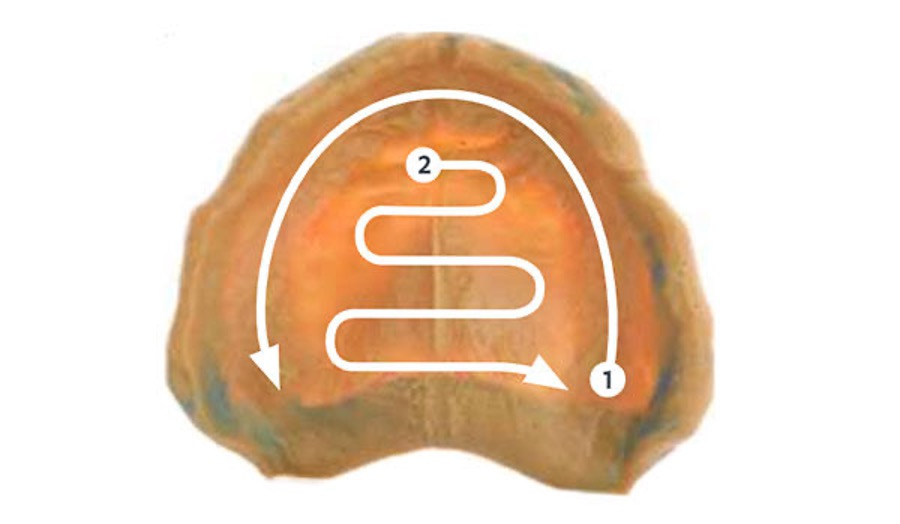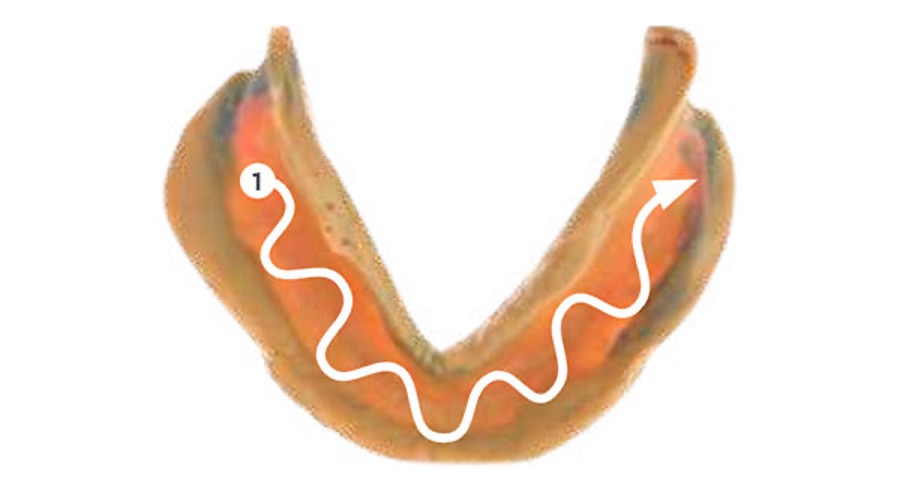Eric D. Kukucka, DD
Denturist
You can scan impressions within a patient’s existing complete removable prosthesis reliably, predictably and efficiently. While TRIOS scanners have been optimized to effectively scan these impression surfaces in a seamless, integrated manner, a designated scan strategy will render excellent scan results and a high-quality, definitive prosthesis.
The reference denture technique is preferred by clinicians and technicians globally for its seamless, technically and clinically integrated workflow. This scan strategy delivers increased patient acceptance and satisfaction, reduces postoperative adjustments, and ultimately improves the patient experience as it requires fewer visits to the clinic. To understand how to obtain the best possible scans, you must designate distinct strategies for the maxilla and mandible, which will be described in detail in the scan strategy.
Getting Started with Scanning Reference Dentures
- Before you begin scanning, evaluate the prosthesis for its distinct characteristics, considering undercuts; the depth, height and width of the alveolar ridges; peripheral border thickness; and overall size and shape. Go over the strategy in your mind. Visualize the win (a perfect scan).
- Important: Remove any excess impression material on the facial, occlusal and lingual aspects of the prosthesis to avoid misalignment of scans and inaccuracies in occlusion.
- It is imperative you select the removable scanning indication on the order form. Once you have selected the removable indication and the arches you wish to scan, the system will prompt you by asking: How do you wish to scan the lower jaw? / How do you wish to scan the upper jaw? Since you are scanning reference denture impressions, select the impression scan.
- Depending on your design software, you should probably leave your scanned model open to prevent any import fails due to a so-called watertight model.
Quick Tip: Allow Time to Render
After you’ve captured the internal alveolar ridge width and depth, allow these scans to render. When you begin to re-scan the peripheral borders, keep the 2D live image so at least one third of the window is positioned over the already aligned alveolar ridge scans and no more than two thirds is positioned over the new scans.
Scanning the Maxilla Impression
Proper strategy is required to achieve global accuracy in scanning the maxillary impression within the prosthesis due to its wide surface and anatomical features, including palate shape, undercuts and ridge form. Fortunately, this can be handled easily.

Get the full path recommendation and step-by-step guide to scanning the maxilla impression by downloading the full scan strategy.
Scanning the Mandible Impression
The goal of scanning the mandibular impression within the prosthesis is to achieve global accuracy. This goal is achievable, but it requires a proper strategy due to the mandibular impression’s narrow surface and anatomical features, like the retromolar pad, alveolar ridge, lingual borders, and undercuts.

Get the full path recommendation and step-by-step guide by downloading the full scan strategy.
Scanning the Occlusion
The goal in scanning the occlusion is to ensure adequate alignment of the maxillary and mandibular reference dentures in centric occlusion. This can effectively be accomplished by conducting the occlusion scan in two manners:
- Utilizing the bite scan feature
- Conducting a 360 degree bite scan alignment
Personally, I prefer the bite scan feature for its predictability, efficiency and accuracy. The feature involves simply scanning the maxillary and mandibular reference dentures either intra- or extra-orally. I prefer to conduct this method by using a rigid bite registration material and capturing the patient’s repeatable, unstrained centric relation record.
Get Mr Kuckuka’s tips on how to trim excessive registration material on the buccal aspect by downloading the full scan strategy.
Eric D. Kukucka, DD, is a denturist from Windsor, Ontario. He is recognized as an important consultant and key opinion leader by Ivoclar Vivadent, 3Shape and Nobel Biocare, and has quickly become a respected authority and international lecturer in digital denture technology.
For more essential insights and know-how from digital dental experts, visit the 3Shape blog: https://utm.io/udwaJ


